- Home
- J. F. Penn
Valley of Dry Bones Page 4
Valley of Dry Bones Read online
Page 4
Naomi gasped at the name. “According to voodoo teaching, the entrance to the underworld can be found through seven gates scattered through the French Quarter here in New Orleans. The souls of the dead must pass through Guinee, a dark place presided over by the loa, Baron Samedi. The location of the Gates of Guinee is a closely held secret, and if they are opened in the incorrect way, evil spirits emerge to terrorize the living.”
Jake frowned. “So that links the Spanish Empire with Guinea in Africa, and the slave trade brought West Africans to New Orleans along with voodoo –”
“– And perhaps pieces of the relic too,” Martin interrupted, his enthusiasm spilling over. “It would make sense if it were scattered across the New World and the Old.”
“Nothing about this makes sense,” Jake said. “But that’s not unusual for an ARKANE mission.”
“Start with the links to the Spanish Inquisition in New Orleans,” Martin said. “I’ll keep digging and see what else I can discover here.”
They ended the call. Jake looked at Naomi. “So where do we start?”
“I know just the place.”
Charity Hospital, New Orleans, USA.
Luis Rey had a townhouse in the historic Faubourg Marigny district – a tiny part of his vast family fortune that had accumulated since the days of the Spanish Empire – but the abandoned Charity Hospital was where he did his real work. When Hurricane Katrina had ripped New Orleans apart, many buildings had never been reclaimed. They lay empty in ruins, fenced off, forgotten except by those who wished to keep their activities away from prying eyes.
Luis shuffled through the abandoned corridors of the hospital carrying the box of bone, his nose wrinkling at the smell of decay. The faded flood tide marks could still be seen on the walls, brown smudges from stagnant water, a toxic soup of human waste, chemical spills, agricultural runoff, and the rotting remains of those who had perished in the floods. All part of a facade now. There were other entrances in nondescript buildings that came in through underground tunnels, but Luis preferred this one. The drip of water, the smell of death, all kept him focused on his goal.
Everything dies. Everything turns to dust. But what if death itself could be beaten?
There was a kind of beauty in the decaying building, but its primary purpose was to keep people out. Homeless vagrants who had wandered in over the years looking for a place to sleep had become part of the experiments. Likewise the urban explorers, the ruin hunters, whose disappearance had been counted by local police as a natural end to the risks they took willingly in the shadows.
Deep inside the shell of the building, hidden within layers of security, Luis had constructed a research lab and private clinic, funded by his fortune and billionaire backers from Silicon Valley as well as clandestine departments of the military. All chased immortality, and now he was a step closer.
Money kept the law away, and money brought scientists to his door. Those who had been discredited for research on the edge of ethics. Those from foreign powers who wanted a new start in America and who would do anything for a green card. Those who were willing to take a devil’s bargain and search for a way to resurrect the dead, to turn dry bones and decaying flesh into living beings again. Generations of Reys had trusted in God to reveal the final resting place of the Hand of Ezekiel, but Luis wasn’t willing to wait any longer. He clutched the box of bone to his chest. Perhaps this would provide the missing piece.
He turned into one of the disused treatment rooms to the side of the main entrance hall. Broken furniture and used syringes lay strewn about the floor. Not a place to linger. Luis walked a slow path through the debris, stepping over the discarded needles which were all tagged for security, setting off alarms if they were moved. At the back of the office, he opened a plain cupboard door and stepped inside, closing it behind him.
A metallic click. A buzzing sound as lasers scanned him for biomarkers.
The back of the cupboard swung open, and Luis stepped into his true home. The high-tech lab was quiet, just the faint hum of medical equipment and the low discussion of hard-working scientists. It smelled of antiseptic, a stringent note that matched the gleaming surfaces around him.
Several glass-walled rooms circled the entranceway, and Luis glanced in at the work in progress as he walked by. In one, a body in an advanced state of putrefaction lay on a gurney while a scientist in a white hazmat suit sliced into its flesh. In another, a young Latino man fought his captors only to be subdued by a needle, before he was strapped down and a mask placed over his face. Luis was glad to see a live one – fresh dead were ideal to experiment on and it was best to keep them sedated until his team had a new batch of powder to test.
Every subject was another step toward the ultimate goal. Each gave their lives to the worthy cause of conquering death – and if they didn’t choose the path willingly, well, God would know His own at the end of it all.
Luis walked to the glass window and tapped lightly upon it. One of the scientists looked up and nodded. She placed the syringe down and stepped outside the room, peeling her hazmat suit away from her face.
With her flawless tawny skin and sapphire eyes, the result of her mixed Creole heritage, Lashonda Milton could have won Miss Louisiana if she had been so inclined. She wore brilliant blue beads wound through her hair, but mostly, she wore her beauty like the outer skin it really was, preferring to pursue the fascinations of the mind. Lashonda had tested at genius level throughout high school, but she had been denied her rightful place at Ivy League universities, judged for her looks, her poverty, and her name. But their loss was Luis’s gain, and Lashonda had joined his team as a young scientist with ambition, a keen desire to learn, and no ethical issues with his experiments.
She managed to compartmentalize her life between the science of her job, the Catholic faith of her Sunday mornings, and the voodoo celebrations of St John’s Day. Luis had an inkling of the nights she spent in the bayou at secret gatherings of the faithful, but he understood the different facets of her nature. After all, Creole was about the mix of cultures. These days, she was his most trusted scientist, one of the few who understood the scope of what Luis wanted to achieve, working with him to shift the line between life and death.
Lashonda ran a hand through her dark curls and gestured at the prone Latino man. “That one is strong. He’ll be a good subject for the next batch.”
Luis held out the box of bone. “I need you to analyze this before you continue with anything else.”
Lashonda grabbed a new pair of sterile gloves and snapped them on before taking it from him. Her eyes widened. “Is this –?”
Luis nodded. “I think so. Finally. But I need to know the age of the bones and their composition. It could be a hoax.”
Lashonda lifted the box and looked at the intricate bony design, noting the fresh crimson inlay. “You want the blood analyzed as well as the bones?”
Luis shook his head. “No need. I know where that’s from.”
“I’ll get on it right now.”
Lashonda turned away, walking with measured steps to her personal lab while Luis entered a small elevator and ascended to his private office. He put his hand on the door handle and waited a second for the biometric scan to complete before it clicked open.
This was his private domain, the heart of the medical lab and where he kept the records of previous experiments under lock and key. Racks of files crowded one half of the room, each containing evidence of a tiny step toward life after death. The rats they had brought back from the dead, shaking, blistering, but alive for seconds nonetheless. The putrefied bodies they had reverted back to a semblance of living flesh. A catalogue of trial and error.
But there was still space reserved on the racks for the next wave of research, the final step toward resurrection. Luis rubbed his aching limbs, aware of the ossification that advanced every day. They were so close. He just needed the final piece – the promise of the Hand of Ezekiel.
He crossed to the far wall of h
is office. It was nothing special to look at, merely another white wall with a painting of the Risen Christ upon it. Luis removed the canvas, undid a simple catch and pulled open the shutters revealed beneath. Behind them lay his family altar – a simple wooden table handed down through generations, upon which lay a Bible and a Book of Days, a journal that held the writings of the monk whose secret lay beneath this modern quest.
The legend of the Hand of Ezekiel had been passed down through the Rey family line, along with the disease that ossified them slowly, turning each to bone. It was said that the secret to raising the dead had been found in West Africa, in what is known today as Equatorial Guinea. A monk, Miguel Rey, had witnessed a whole village rise from a mass grave at the hands of a witch doctor. Whereas many would have dismissed such events as demonic, a trick of the darkness that held the continent in its embrace, the monk remembered the prophecy of Ezekiel’s Valley of Dry Bones. He saw a power that could be used by the Spanish Empire to renew its forces, overstretched as they were across the New World and in danger of losing what had been hard won with blood and steel.
The monk risked his life to steal the witch doctor’s secret and took it back to Spain, a gift for the Catholic Church. But he was betrayed, the Hand of Ezekiel stolen. In the bloody chambers of the Spanish Inquisition, Miguel’s body was torn apart while he confessed to sinister sacrificial rites, summoning the devil, anything to stop the pain. The Hand disappeared into the vaults of the Inquisitors, protected as a dark secret never to be spoken of again.
Condemned to burn at the stake, his brother, the first Luis Rey of the line, visited the monk in the dungeons of Toledo and Miguel recounted the whole story. As his dying screams echoed around the square the next day, as the fire turned him to ash, his brother vowed to avenge him and show the Catholic Church that resurrection was not just a gift of God, but could be summoned by the hand of man.
Thus began a quest across the generations as the Rey family sought to find the Hand of Ezekiel. Over the centuries, the Inquisition lost its power, going underground, taking its secrets into shadow. The Hand was thought lost, but the emergence of the Brotherhood of the Breath at the crypt meant that they were close at last.
A knock at the door interrupted his thoughts.
Luis turned and buzzed Lashonda in. She placed the box gently on his desk, her fingers lightly caressing the ridges on its surface.
“The bones are from the mid to late seventeenth century. Most are from children, a mix of Spanish and West African descent.”
Luis let out a deep breath and leaned forward to look more closely. “It’s real then.”
Lashonda nodded. “But the box is empty. We still have to find the Hand.”
Luis turned the box upside down, the crimson lines revealing a map of the ancient Spanish Empire. It stretched from West Africa to Spain, from the New World and into Asia, the outlines of nations intricately constructed from the shards of tiny bone. Five blood-red rubies shone under the light of the desk lamp, marking places where the Spanish had once reigned.
“But now we know where to start looking.”
5
Jackson Square, New Orleans, USA.
The waiter put down a plate of what looked like powdered sugar. Naomi reached over and dug through to the fried pastry beneath, sending clouds of white over the marble tabletop.
“You can’t come to New Orleans without trying beignets at Café du Monde.” She took a bite and grinned. “Hmm, heart attack on a plate. You gotta try them.”
The sweet baked smell made Jake’s mouth water. He tucked in, and between them, they polished off a plateful along with cups of café au lait. “Not bad for a tourist trap.”
Fueled up with sugar and caffeine, they walked across Decatur Street to Jackson Square, past rows of tourists queuing for the horse and carriage tours, and on toward the street artists gathered in the shade of live oak and magnolia trees.
An ornate metal fence surrounded the historic park in the French Quarter, every inch hung with hand-made art. Bright paintings of sugar skulls next to black and white line drawings of jazz icons, watercolors of the city streets next to abstract representations of the Deep South. Highly skilled painters sat next to hawkers selling cheap souvenirs. Tarot card readers rested under striped umbrellas, each a way to see into the world beyond, while above them, multi-colored Mardi Gras beads hung from the trees, a reminder of worldly pleasure. The sound of music filled the air – the deep sonorous notes of a saxophone, the bright notes of a fiddle, then around the corner, a girl with a guitar, her voice an offering to whatever spirits walked the streets today in human guise.
Jake and Naomi ambled through the square, weaving through the tourist crowd, looking up at St Louis Cathedral before them. Its facade was the color of ivory dulled by the passage of time, with three spires covered in black tiles rising above, a clock face on the middle one. The two side turrets had patriarchal crosses mounted high up, with an extra line above the central crossbar.
“It was a simple wooden structure when the settlers built the first church here in 1718,” Naomi explained. “They constructed a more robust brick and timber church later but it burned down in the Great Fire of 1788, and this version was constructed in 1850.”
Jake weighed it against the great cathedrals of Europe and found it wanting. St Louis was the oldest cathedral in the United States, the seat of the Roman Catholic Archdiocese of New Orleans, but it was tiny in comparison to the impressive edifices of Catholic Spain and France.
“How does it link to the Inquisition?”
Naomi pointed to the Cabildo on the left of the cathedral. “That used to be the Spanish colonial city hall. There’s a painting inside that you need to see.”
They walked over and entered through a grand doorway, the cool semi-darkness a relief after the close heat outside. The interior reminded Jake of a European stately home, faded grandeur, old paintings of forgotten faces ignored by tourists on smart phones looking for something more dramatic to photograph. There was a sense of disrepair, a quiet, dusty memory in comparison to the vibrant life played out on the streets of Jackson Square outside.
Naomi walked ahead, her heels clicking on the stone floor until she stopped in front of a huge painting. “Here he is. Supreme Officer of the Holy Inquisition of Cartagena in Louisiana.”
The painting of Father Antonio de Sedella, known as Père Antoine, was as large as the wall. The friar stared out from the past, his dark eyes serious, with a prominent nose and generous lips. His tonsured hair was white and his beard hung down to the front of his black habit. The stone arch of the cathedral framed his figure as he stretched out a hand toward a book on a green table. A russet chair and scarlet curtain completed the image, the colors echoing the bloody history of the church he served.
“Despite his austere gaze, Père Antoine was known to be kind to his parishioners, even the slaves.” Naomi scanned the text next to the painting. “He was a Capuchin friar, originally from Malaga in the south of Spain. He arrived in New Orleans in 1774 as an official of the Inquisition and became pastor of St Louis. The Tribunal of the Inquisition wasn’t active here, but he still had their jurisdiction.”
Jake leaned toward the painting to look more closely at the table in front of the friar. “You’d expect him to be reading a Bible, but the book is too thin.” The faint text on the spine was just legible. “It’s Ezekiel. Strange. What else does the text say?”
Naomi paused. “Oh, that is weird. He baptized Marie Laveau and presided over her wedding in 1819.”
“What’s weird about that?”
Naomi turned to him, her eyes wide. “Marie Laveau, the Voodoo Queen, remember? We saw her grave in St Louis cemetery No. 1.” She raised an eyebrow. “There’s no way Père Antoine could have been ignorant of her practices. It’s another link between voodoo and Catholicism.”
Cases containing books and letters from the time surrounded the painting. Most were dull, ecclesiastical records but one in particular caught Jake’s eye
. A letter in looping, generous handwriting, the mark of an educated man.
“It says here that Père Antoine was blamed by some for the destruction of the city in the Great Fire of 1788. He refused to have the bells ring out in warning as it was Good Friday and as such was prohibited.”
Naomi looked puzzled. “That doesn’t make sense. Other records show he was often a rebel against the official religious law, acting in defense of his parishioners and for the greater good. What possible reason could he have for wanting to burn down the city?”
Jake raised an eyebrow. “Maybe there was something that could only be destroyed by fire, something he didn’t want to be found.” He turned and looked into the eyes of the friar, trying to figure out the man across the centuries. “What were you hiding?”
Naomi put a hand on Jake’s arm. “He was buried in the cathedral, and it’s said he haunts the place. Perhaps we should go look inside? See if we can find anything else that might help.”
They walked out of the Cabildo and into the cathedral next door, entering behind a group of teenagers who chatted away in French while ignoring their local guide in front.
Inside the cathedral, Jake looked up at the vaulted nave, where paintings of saints looked down upon the faithful. Flags from different nations hung at the top of tall pillars above the pews. A restrained altar by Catholic standards sat below a massive painting of Louis IX, King of France, embarking on a crusade, a holy war to destroy the unbelievers. Jake shook his head and sighed. Humans didn’t change. Always demonizing the Other, claiming truth as their own and killing those who stood against them.
He turned around slowly, letting the atmosphere of the place sink in. It felt far more like a tourist location than a place of worship, the level of noise more suited to a theme park than a cathedral. It was warm, balmy even, a sensation he struggled to associate with the huge stone edifices of Europe that kept the faithful shivering on their knees. The believers here were comfortable, with no trace of hardship or suffering. Even the painted saints looked well fed, clothed in finery, their faces belonging to the wealthy patrons of European heritage, not the itinerant preachers of the early believers in the Middle East.

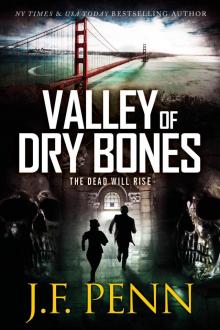 Valley of Dry Bones
Valley of Dry Bones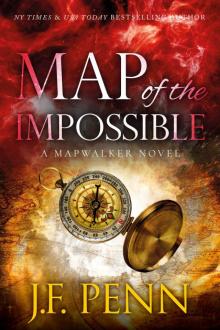 Map of the Impossible
Map of the Impossible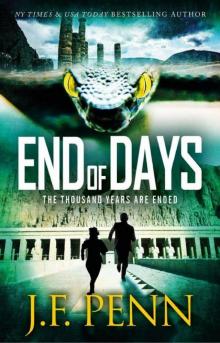 End of Days
End of Days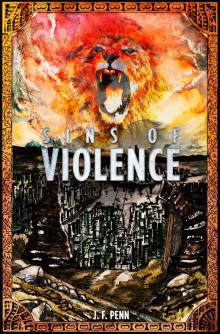 Sins of Violence
Sins of Violence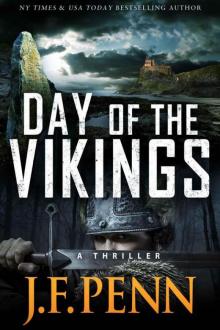 Day of the Vikings
Day of the Vikings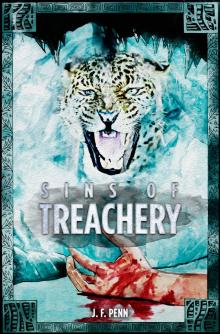 Sins of Treachery
Sins of Treachery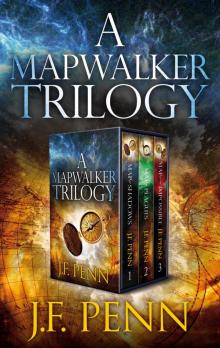 A Mapwalker Trilogy
A Mapwalker Trilogy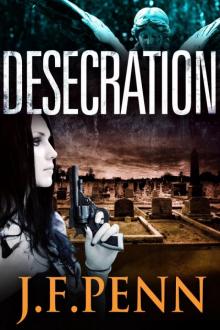 Desecration
Desecration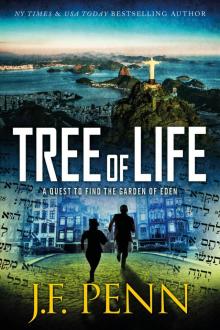 Tree of Life
Tree of Life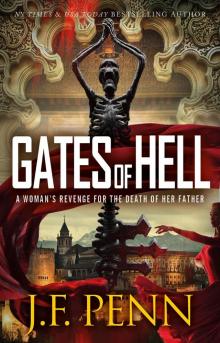 Gates of Hell
Gates of Hell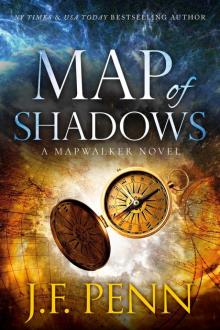 Map of Shadows
Map of Shadows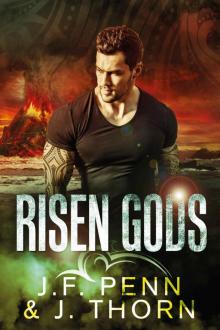 Risen Gods
Risen Gods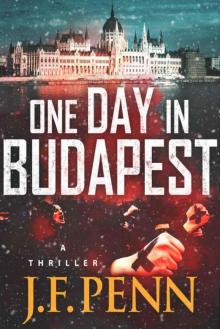 One Day In Budapest
One Day In Budapest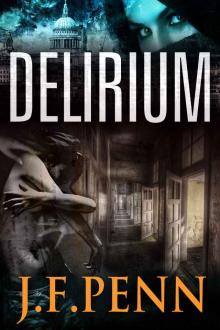 Delirium (London Psychic)
Delirium (London Psychic)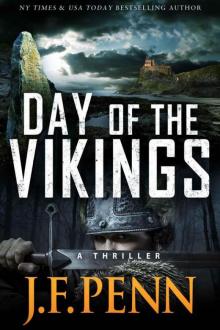 Day of the Vikings. A Thriller. (ARKANE)
Day of the Vikings. A Thriller. (ARKANE)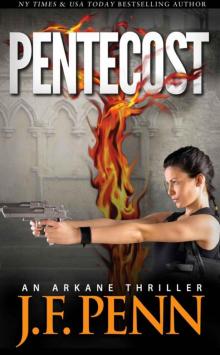 Pentecost. An ARKANE Thriller (Book 1)
Pentecost. An ARKANE Thriller (Book 1)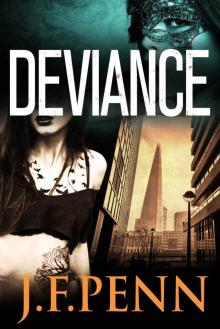 Deviance (The London Psychic Book 3)
Deviance (The London Psychic Book 3)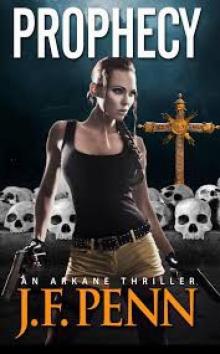 Prophecy. An ARKANE thriller. (Book 2)
Prophecy. An ARKANE thriller. (Book 2)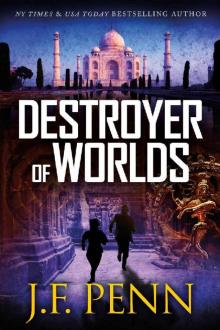 Destroyer of Worlds (ARKANE Book 8)
Destroyer of Worlds (ARKANE Book 8)